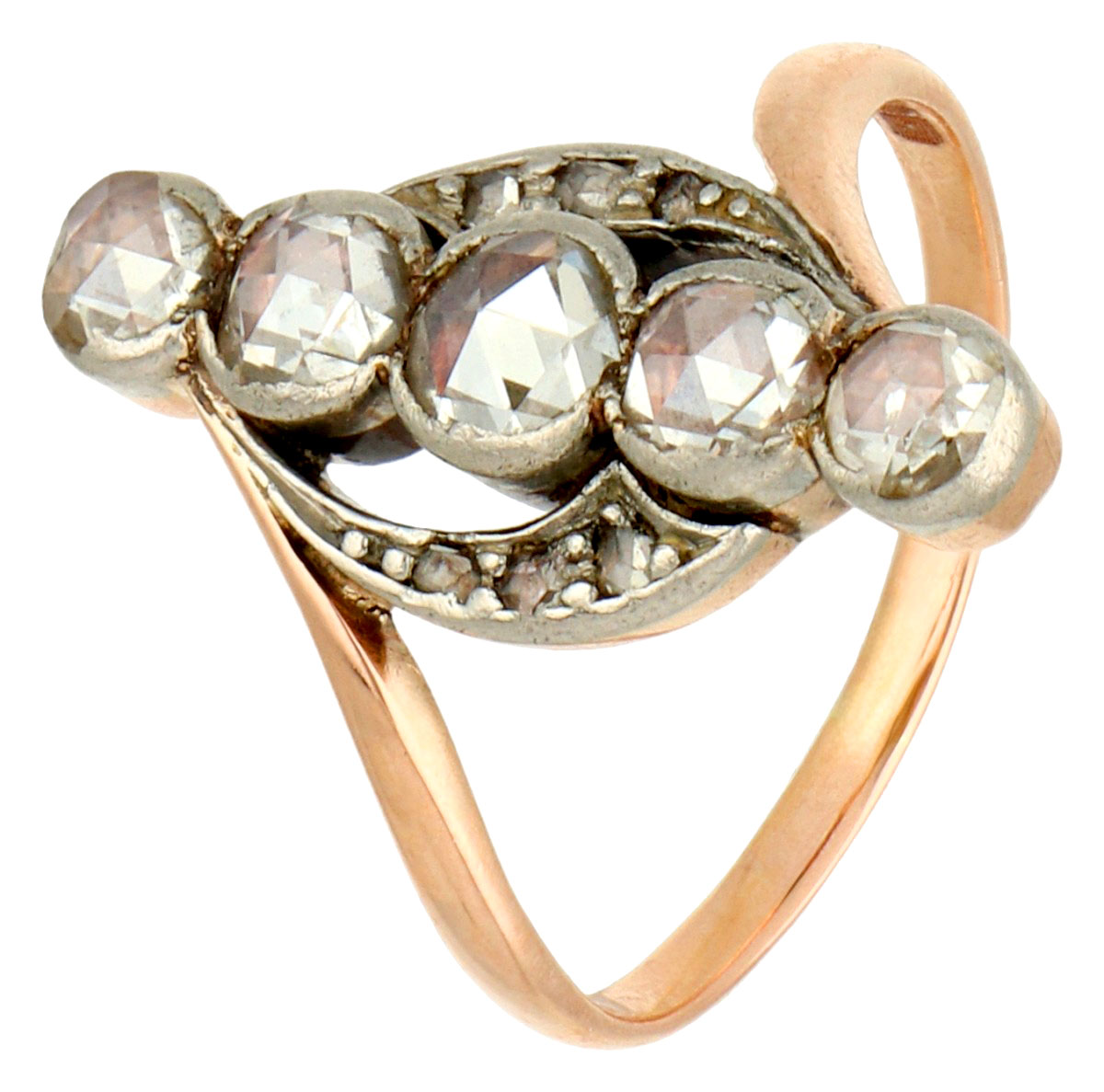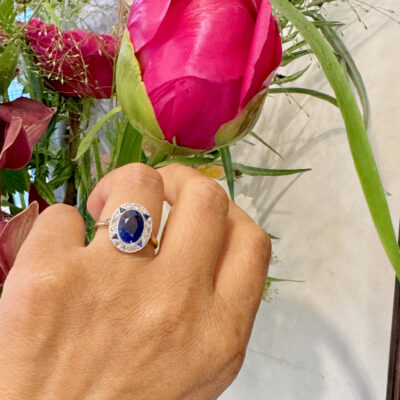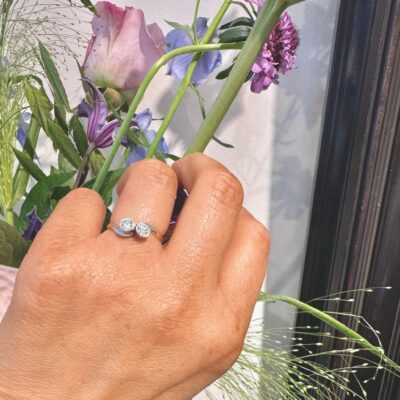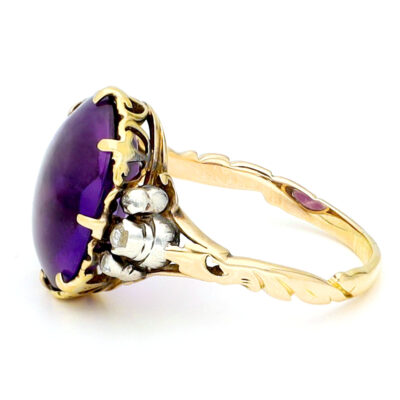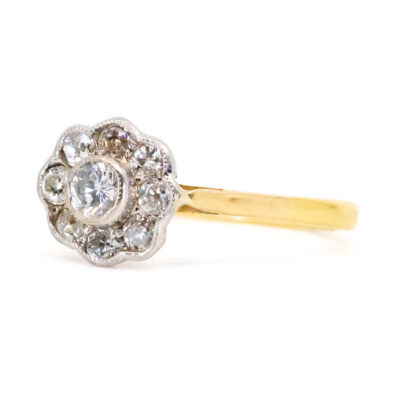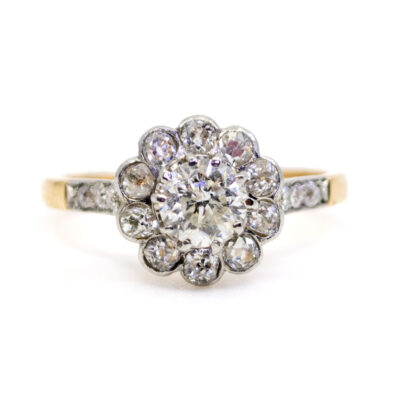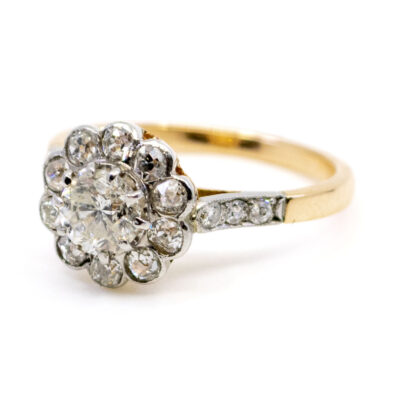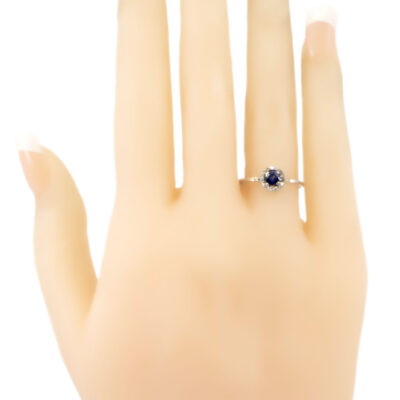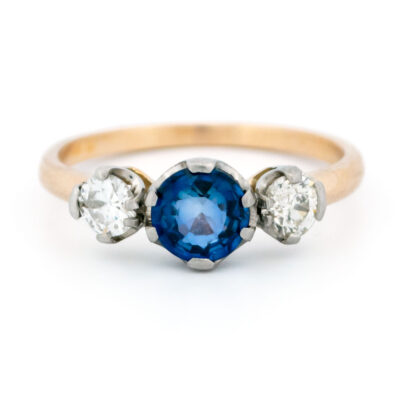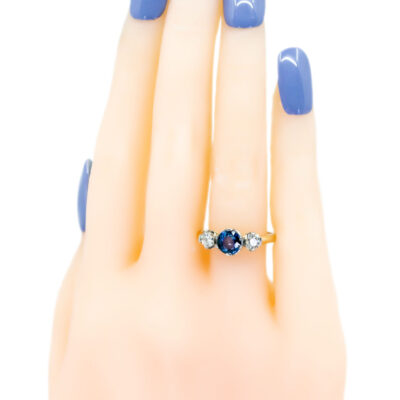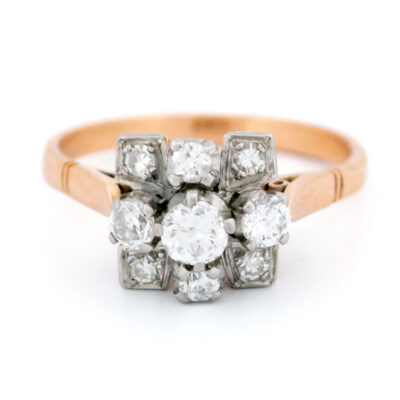This early 20th-century crossover ring exudes vintage charm. Featuring approximately 0.50ct of rose-cut diamonds, the design is crafted in 14k yellow gold and platinum. The graceful curves of the band and the shimmering diamonds create a timeless statement of elegance.
Videos
This early 20th-century crossover ring exudes vintage charm. Featuring approximately 0.50ct of rose-cut diamonds, the design is crafted in 14k yellow gold and platinum. The graceful curves of the band and the shimmering diamonds create a timeless statement of elegance.
Details: ±0.50ct Rose-cut diamonds, 14k, Platinum Ring
Size: 16.51 NL / 51.9 FR / 6 US / L½ UK, sizeable (within reason).
Weight in grams: 3.7.
Condition: Very good condition – slightly used with small signs of wear.
| Design Era | |
|---|---|
| Design & Historical Context | During the 1910s to 1950s, the design of jewelry remained creative and stylish despite being impacted by economic and military events. Jewelry fashions during this time were influenced by various parts of the world, including the Near and Far East, and featured both exotic and geometric patterns that reflected the emergence of the machine age. New York became an important center for fashion along with Paris, and European jewelry companies had the opportunity to sell to and purchase from the Indian subcontinent. Art Deco jewelry, characterized by the use of numerous gemstones, was popular during this time, and the use of gold in jewelry increased in popularity due to its lower cost compared to platinum. Jewelry design also attracted artists and designers from various fields, giving hints about the direction that the industry would take in the future. |
| Key Materials | |
| Materials & Craftsmanship | Rose-cut diamond: The Vintage Gem of Romance and Light Rose-cut diamonds are a beautiful and romantic choice in the world of jewelry, known for their distinctive dome-shaped appearance and soft, glowing sparkle. This antique diamond cut, dating back to the 16th century, features a flat bottom and a domed top covered in triangular facets that resemble the petals of a rosebud—hence the name. Historically, rose-cut diamonds were highly prized during the Georgian and Victorian eras, often used in jewelry pieces meant to be worn in candlelight, where their gentle sparkle added a warm, intimate glow. Unlike modern brilliant cuts, which are designed for maximum fire and brilliance, rose-cut diamonds offer a more subdued, yet enchanting, reflection of light. In modern jewelry, rose-cut diamonds are cherished for their vintage appeal and unique charm. Their flat base and shallow profile make them perfect for creating low-profile, elegant designs that sit close to the skin, such as in rings, pendants, and earrings. Rose-cut diamonds are often used in vintage-inspired and bespoke pieces, where their historical elegance adds a touch of timeless romance. Rose-cut diamonds are more than just a gemstone choice; they are a symbol of understated beauty and classic romance. Their soft, luminous sparkle and antique allure make them an ideal choice for jewelry that tells a story and captures the essence of a bygone era. 14k: The Durable Choice for Everyday Elegance 14k gold is a popular and practical choice in fine jewelry, known for its durability, affordability, and beautiful color. The "14k" signifies that the gold is composed of 58.3% pure gold and 41.7% alloyed metals, such as copper, silver, nickel, or zinc. This combination results in a strong and resilient material that can withstand the rigors of daily wear, making it an ideal option for those seeking both beauty and durability. Historically, gold has always been a symbol of wealth and luxury, and 14k gold strikes a perfect balance between the rich appearance of gold and the strength needed for everyday use. Because of its lower gold content compared to 18k or 24k gold, 14k gold is more affordable, making it a popular choice for a wide range of jewelry pieces. In modern jewelry, 14k gold is appreciated for its versatility and variety. It is available in several colors, each achieved by mixing gold with different metals: Yellow Gold: A classic and timeless choice, 14k yellow gold has a warm, golden hue that complements most skin tones and is well-suited for both modern and traditional designs. White Gold: Created by alloying gold with white metals like nickel or palladium, 14k white gold has a sleek, silver-like appearance. It is often rhodium-plated for added shine and is a popular choice for engagement rings and other contemporary jewelry. Rose Gold: Achieved by mixing gold with copper, 14k rose gold has a soft, pinkish hue that has gained popularity for its romantic and vintage appeal. It is a favorite for those seeking a unique and stylish alternative to traditional gold colors. 14k gold is commonly used in a wide array of jewelry, including rings, necklaces, bracelets, earrings, and watches. Its durability makes it especially suitable for pieces that are worn daily, such as wedding bands and engagement rings, where the balance between strength and beauty is crucial. 14k gold is more than just a practical choice; it is a symbol of enduring style and everyday luxury. Its ability to retain the look of gold while offering greater resistance to scratches and dents makes 14k gold a versatile and timeless option for any jewelry collection. Whether in a simple band or an elaborate design, 14k gold offers a perfect blend of elegance and durability that can be enjoyed for years to come. Platinum: The Metal of Endurance and Prestige Platinum, a rare and precious metal, is renowned for its exceptional strength, purity, and enduring beauty. With its naturally white luster and remarkable resistance to tarnish and corrosion, platinum has become synonymous with luxury and durability in the world of fine jewelry. Historically, platinum has been valued for its rarity and unique properties. Ancient Egyptians and Pre-Columbian civilizations used platinum in their ceremonial jewelry, though its full potential wasn’t realized until the 18th century. By the 20th century, platinum became the metal of choice for royalty and high society, particularly in engagement rings and fine jewelry, due to its ability to securely hold precious gemstones. In modern jewelry, platinum is highly prized for its hypoallergenic properties and its ability to withstand daily wear without losing its brilliance. Its density and weight give it a luxurious feel, while its purity—often 95% pure—makes it an ideal setting for diamonds and other gemstones. Platinum's naturally white sheen enhances the sparkle of gems, and its durability ensures that jewelry pieces crafted in platinum can be passed down through generations. Platinum is more than just a metal; it is a symbol of strength, rarity, and timeless elegance. Its unmatched durability and sophisticated appearance make it the ultimate choice for those seeking jewelry that lasts a lifetime while maintaining its prestige and beauty. |
| Size | |
| Gender | |
| Weight (in grams) | 3.7 |
| Condition | Very good condition – slightly used with small signs of wear |
By following these tips, you can enjoy your precious jewelry for many years to come.
Related Products
-
Diamond Sapphire 18k Platinum Cluster Ring 16363-8820
€ 2.495,00 VAT incl. (where applicable) -
Diamond 18k Platinum Toi Et Moi Ring 17320-9170
€ 1.895,00 VAT incl. (where applicable) -
Amethyst Diamond 14k Solitaire Ring 17983-9374
€ 1.895,00 VAT incl. (where applicable) -
Diamond 14k Cluster Ring 10613-6246
€ 1.895,00Original price was: € 1.895,00.€ 1.400,00Current price is: € 1.400,00. VAT incl. (where applicable) -
Diamond 14k Platinum Cluster Ring 10314-4983
€ 4.895,00 VAT incl. (where applicable) -
Sapphire Diamond 18k Platinum Cluster Ring 5873-0629
€ 995,00 VAT incl. (where applicable) -
Diamond Sapphire 14k Platinum Trilogy Ring 14408-5114
€ 3.295,00 VAT incl. (where applicable) -
Diamond 18k Platinum Ring 14401-2411
€ 2.895,00 VAT incl. (where applicable)
- Home
- Collection
- Fine Jewelry
- Silver Jewelry
- Silverware
- Boxes
- Candlesticks
- Salt and pepper shakers
- Miniatures
- Salt cellars
- Spoon Set
- Condiments
- Frames
- Napkin Ring
- Spoon
- Oddities
- Cups
- Vases
- Cutlery
- Serving Spoon And Cake Server
- Candlesticks
- Baskets
- Hanukkiah
- Spice Tower
- Yad
- Tea Set
- Sugar Castor
- Napkin Rings
- Wine Bottle Coaster
- Wine Stopper
- Tea Pot
- Jugs
- Rattles
- Hip Flask
- Miscellaneous
- Rings 💍
- About
- Contact
